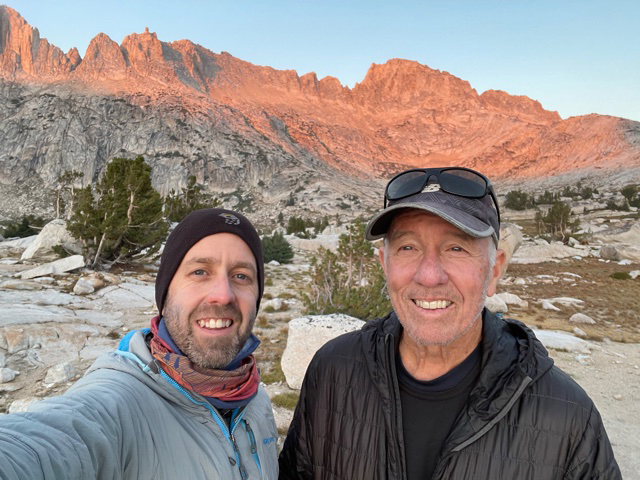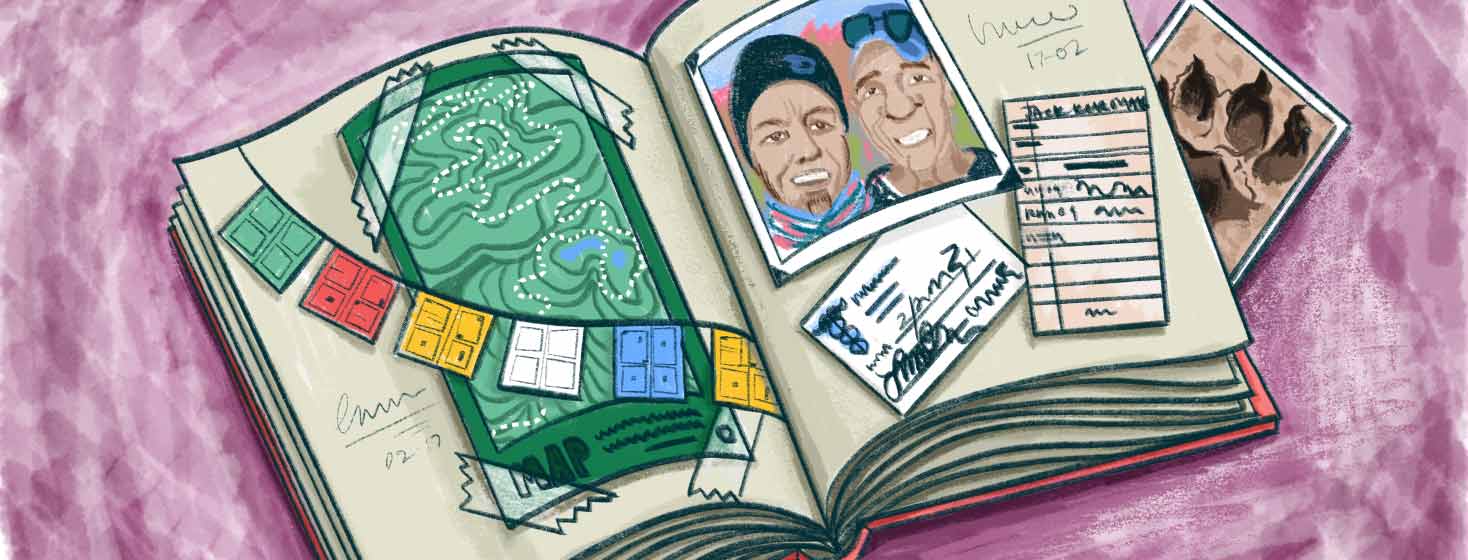Climbing Mountains (Part 1)
Editor's note: This is part 1 of a series. Read Part 2.
When you’re walking around with two stents and one heart attack on record, and when you take baby aspirin in the morning and a bomber statin in the evening, climbing mountains may sound like a foolish undertaking.
Or it could also be taken as a metaphor, as in “walking two miles in the hills this morning is like climbing a mountain for me.” In my case, it’s both. I like to literally climb mountains, and it’s also a metaphor for accomplishing goals that require hard work, goals that might also fulfill dreams.
Climbing mountains
Many years ago I read a novel, Dharma Bums, written by one of my literary heroes, Jack Kerouac, the famous author of On the Road, an American classic. Dharma Bums tells the story of an itinerant writer, Ray Smith, as he travels through California and into the Northwest in 1955-56. Along the way, he meets up with a poet, Japhy Ryder, and together they attempt to climb Matterhorn Peak in the Hoover Wilderness, which is just northeast of Yosemite National Park. Kerouac’s novels are highly autobiographical. Ray Smith is Kerouac’s stand-in, and Japhy Ryder is real-life poet, Gary Snyder, who won the Pulitzer Prize in the early 70s. Snyder is also a favorite of mine.
Kerouac didn’t make it to the top of Matterhorn, but for a long time, it was a fantasy of mine to attempt the same peak at a rugged 12,285’. That fantasy became more of a possibility when I started backpacking every summer, beginning in 2002. That possibility became a reality when my oldest son, Devin, and I decided to attempt Matterhorn Peak this summer.
Making the journey
We reserved permits for late August. Devin booked a flight from Boston, and after a four-day adventure involving canceled flights due to hurricanes in the east and fires in the west, and an all-night rental car drive from LAX to Mammoth Lakes, we drove to the trailhead just west of Bridgeport, CA, on August 25th.
We had plotted a 40-mile round trip that would take us to the base of Matterhorn at the end of the second day, followed by a third-day ascent, and either one or two more days to hike out.
Devin is forty-one, a marathoner, a 1%er in terms of cardiovascular fitness. I’m seventy-two, a month shy of seventy-three, and I’m trying to reach my retirement goal of backpacking at least until I’m seventy-five, stents and heart attacks and medications be damned.
Fortunately, my son and I get along famously on outdoor adventures. Much of that success stems from his patience with me. I can more or less keep up on the downhills and the flats, but the uphills at altitude are another story. That’s where his patience comes in, and he’s perfected the art of “being here now,” maybe attributable to his many years as a practicing Buddhist.

Devin and me with Matterhorn Peak above my head.
Staying in the moment
When I backpack I carry a normal-sized pack that weighs, with food, water, clothes, gear, and supplies, between 33-37 pounds. It gets a little lighter each day as I drink the water and eat the food, but not enough to make a huge difference.
Of course, I take my medications with me, but the thought only occasionally crosses my mind that I might have a heart attack on the trail, which would be quite inconvenient. I save my mental strength for “one foot in front of the other” thoughts, and “I’ve done this many times before” motivational speeches to myself. Cliché as it may sound, it’s all about staying in the moment, monitoring my pace and my breathing, trying to maintain a conversational pace, staying hydrated.
On the first day, Devin and I climbed a trail that gained 2500 vertical feet in about 9 miles. Look up and visualize a 250 story building and you get the idea. It wasn’t a wicked climb, but it was uphill virtually the whole way, through a subalpine forest of pine and aspen, along clear tumbling snowmelt streams, past a popular day hike location, Barney Lake. We camped at Peeler Lake, 9500’, just below the treeline for the Sierras.
Nature's majesty
During the night I woke up and was rewarded by a perfectly framed view of the Big Dipper through the mesh at the end of my tent. It was as if someone had painted it on a dark canvas for me. Took my breath away.
Day two was a grueling 12 miles that took us over two 10,000’+ passes (Rock Island and Mule), and within half a mile of the top of a third 10,000’+ pass, Burro. Many challenging steps up the granite staircase.
Along the way, we could see the majesty of the Sierra all around us, and also some very big bear paw prints in a mud flat beside a stream. We paused to snack at Snow Lake at the top of Rock Island Pass and again at the base of Mule Pass. I consumed over three liters of water and pawned off some of my pack weight to Devin near the end, but the effort was worth it.
Now above treeline, we camped beside two no-name alpine lakes (which I quickly named Jack and Gary) on a broad scrub brush and scattered pine plain beneath Burro Pass that was flanked by the granite towers of Sawtooth Ridge and the Finger Peaks. We both rinsed off in the lake, cold but immensely refreshing. That night we didn’t even bother setting up our tents. We slept under the stars with the Milky Way as our blanket and Jupiter as our nightlight.
Do you have a heart failure story? Click the button below to share with our community!

Join the conversation